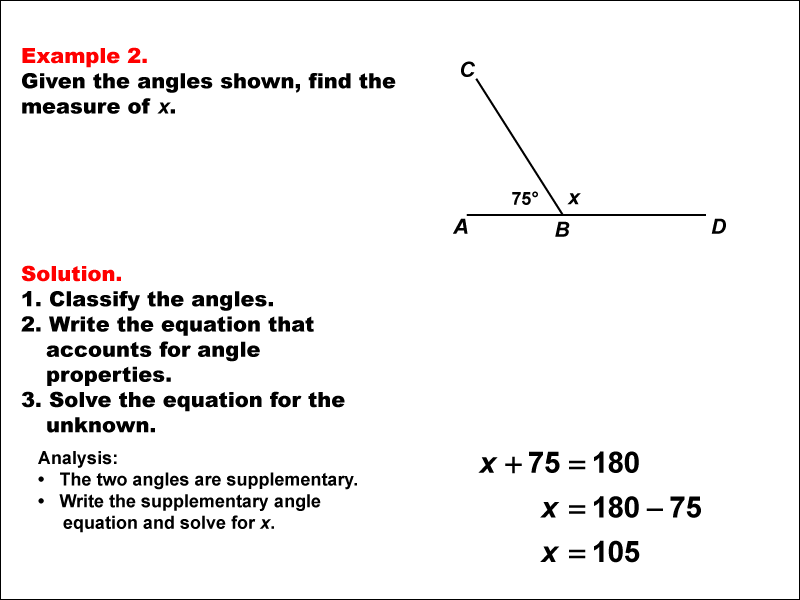
Display Title
Math Example--Solving Equations--Solving Equations Using Angle Properties: Example 2
Display Title
Solving Equations Using Angle Properties: Example 2

Topic
Equations
Description
This example illustrates solving equations using angle properties, focusing on supplementary angles. Supplementary angles are two angles that sum to 180 degrees. In this scenario, we have one known angle of 75° and an unknown angle x. The equation for supplementary angles is always in the form: angle1 + angle2 = 180°.
Here, we can write 75 + x = 180. To solve for x, we subtract 75 from both sides: x = 180 - 75, giving us x = 105°.
This method of solving angle equations relies on understanding geometric properties and applying basic algebraic techniques. It's essential to recognize various angle relationships in geometry, such as supplementary angles, complementary angles, or angles formed by intersecting lines. By identifying these relationships, we can formulate equations and solve for unknown angles. This process not only reinforces geometric concepts but also strengthens algebraic problem-solving skills. In practical applications, such problems are crucial in fields like construction, engineering, and computer graphics, where precise angle calculations are necessary for structural design, navigation systems, or creating realistic 3D models.
For a complete collection of math examples related to Equations Using Angle Properties click on this link: Math Examples: Equations Using Angle Properties Collection.
| Common Core Standards | CCSS.MATH.CONTENT.HSG.CO.C.10, CCSS.MATH.CONTENT.HSA.CED.A.1 |
|---|---|
| Grade Range | 9 - 11 |
| Curriculum Nodes |
Algebra • Expressions, Equations, and Inequalities • Applications of Equations and Inequalities Geometry • Angles and Planes • Definition of an Angle |
| Copyright Year | 2022 |
| Keywords | angles, solving equations |